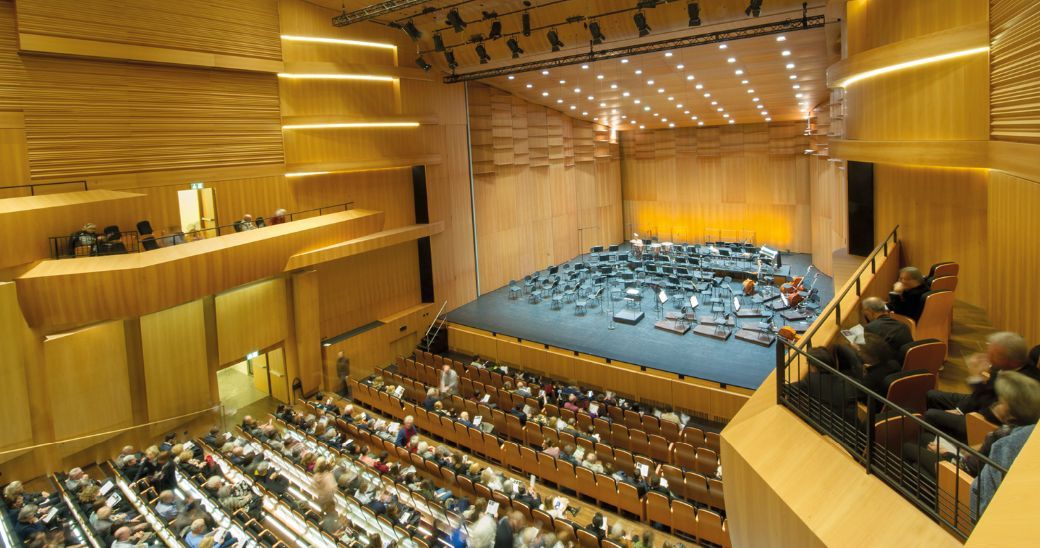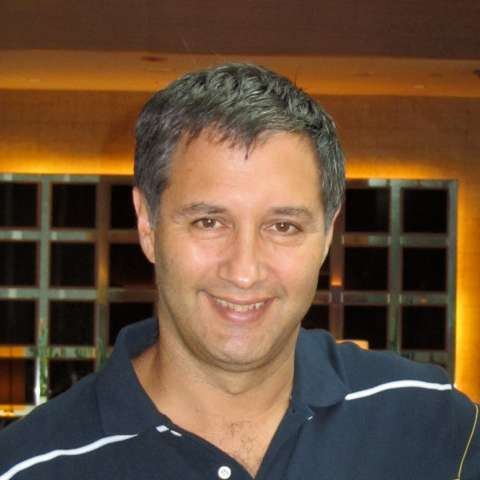What’s it like to hear the first note of music played in a brand new concert hall? There can be few artistic directors working today who have been in charge of a hall’s opening, and then gone on to manage the ensuing seasons – making LuganoMusica’s Artistic Director Étienne Reymond a rare animal indeed.

His primary reaction was one of relief. “The very first note of music played here was played by Enrico Dindo, the wonderful Italian cellist, who lives here in Lugano because he teaches at the Conservatory. I saw him passing by with his cello – it was about one year before we opened and the hall was almost finished. He took out his cello and we heard him: it was fantastic, simply fantastic. Then, in spring 2015, we made two or three acoustic tests with the Orchestra della Svizzera italiana, so we were quite relieved before the hall opened.” At the first concert, there was another wave of emotion, albeit tinged with anxiety: “They are coming. People are coming.”
That relief has turned out to be well justified, since the acoustic at LAC (Lugano Arte e Cultura) is world class. I had the opportunity to hear it for myself the evening before this interview, with Orchestra Mozart and Daniele Gatti performing the new season’s opening concert. The combination of warmth and detail was striking. The reverberation time is generous – listen to the last chord of a Beethoven symphony and you have plenty of time to hear it die away – but somehow, all that reverberation never gets in the way of the individual instruments: every detail of each instrument’s timbre remains audible.
Reymond describes the sound as “very direct, very clear. I would sometimes wish for a little more bass, but I like it very much because you really hear the sound of the musicians. It’s not fake, nothing has been transformed. It can be very transparent, and the musicians have all the dynamic range that they want without any problem, especially when playing pianissimo: the substance of the sound remains.”
The acoustics were supervised by Müller-BBM, the company founded by Lothar Cremer, legendary acoustician of the Berlin Philharmonie. But in contrast to the Philharmonie’s vineyard style, LAC is a shoebox, albeit an unusual one: relatively long, very high-ceilinged and entirely clad in beechwood. The Orchestra della Svizzera italiana, the hall’s resident orchestra, is actually a chamber orchestra with 41 musicians, so the hall had to be well suited to classical repertoire. “But the idea was also to continue the tradition of the Lugano Festival, to bring large, international orchestras for Brahms, Bruckner, Strauss, Stravinsky and so on,” Reymond explains. “So they cleverly built a big stage and a very big auditorium. We have 10,000 cubic metres, which is very large since we only have 986 seats. This allows the sound to expand, especially when you’re on the balcony, where the acoustic is wonderful. It’s very good downstairs, but on the balcony it’s exceptional.”
LAC is a multi-purpose space, staging spoken theatre as well as dance, opera and both symphonic and instrumental concerts. Most acousticians would agree that you can’t do all these forms without compromise; in the case of LAC, it’s the theatre that has been compromised. Reymond explains that “unfortunately, the actors suffer from the acoustic because it is an acoustic for music, with echo, so they have to be microphoned”. But it’s as good for piano recitals, in his view, as it is for orchestras of any size.
Before LAC opened in 2015, he explains, concerts in Lugano happened in one of two places. “One is the Palazzo dei Congressi, built in the late 1970s – it has a poor acoustic, meaning many artists didn’t want to go there. Then there’s the radio studio, which is quite good, but it contains only 400 seats. There was the Lugano Festival, which was created with the name Primavera Concertistica in the 1980s, and the goal was to bring big international orchestras to Lugano. At some point, they also tried ro do recitals, but the acoustic was so poor that they stopped.”
Spurred on by Giorgio Giudici, the music-loving mayor of Lugano, and the city’s head of arts, Giovanna Masoni Brenni, the city decided to build a new arts centre which would house two proper concert halls as well as merging the small city and cantonal museums into what is now MASI, the Museo d’arte della Svizzera italiana. They chose the site of the former Grand & Palace Hotel, which had been burned to the ground in the late 1970s and had become a local eyesore. Eschewing the idea of “a second Guggenheim museum”, they appointed a local architect, Ivano Gianola, whose idea was to place the building within nature: the green of the wooded mountains which fall into the lake opposite LAC is colour-matched by green marble (sourced from, of all places, Guatemala).
LAC’s effect on the cultural life of the city was swift and substantial. “People tell me that the quality of the building and the quality of the hall and its acoustic has dramatically changed the habits of audiences. Sometimes, the concerts in the Palazzo dei Congressi were empty, sometimes half empty. It was a desolate situation; people went there because it was the only place where they could listen to music. Now they go to LAC with pleasure, because they know that the experience will be excellent.” It’s fortunate for Lugano, he points out, that Milan doesn’t have a really good concert hall, which means that a fair number of people make the 80 minute train journey from Milan to Lugano to attend concerts – even ones where the same artists are playing the same programme as in Milan.
Reymond is a trained musician himself, having studied conducting in his home town of Lausanne and then at the Hochschule in Köln – “I thought I would be the next Karajan: it’s easy when you conduct a CD,” he grins. Soon, however, he realised that it would be best to leave the music to others and focus on his organisational talents, which led to a career encompassing La Scala and the Tonhalle Zürich. That background has given him an enviable list of contacts amongst top musicians, which has served him well in Lugano. In his first season, the artist-in-residence was Daniil Trifonov, which he describes as a coup, with the audience realising that they could now have extraordinary young talent coming to their city.
When Reymond plans a season, his starting point is to invite musicians he admires. He loves introducing artists who are well established in France and the main part of Switzerland but “who may not be terribly known south of the Alps”: Jean-Guihen Queyras, Alexandre Tharaud, Emmanuel Pahud (who is a good friend). This season, he’s excited by the arrival of William Christie and the Jardin des Voix on their tour of Purcell’s Fairy Queen. “But sometimes, I invite people who are maybe not completely in my music background, but for whom I recognise the importance. I’m working for the community, so it’s not only my taste that matters. And I always try to bring some surprising things: this year we have the Gershwin Piano Quartet, four guys I know very well from my Zurich time. Having four pianos on stage is something quite spectacular!”
Reymond is keen to provide music to suit the widest possible variety of his audience members. “Of course, everyone needs big names, because they attract the main audience. But I never forget that there is also a big part of our audience who say ‘OK, but I also need new faces, bring young people, bring unknown people’.” That means making music available outside the confines of LAC itself, with the launch this year of a programme called “Musica nei quartieri” (music in the neighbourhoods). “We found six different places in Lugano; one or two are more or less concert halls, others are not at all, but the acoustic is really acceptable. We are doing one hour concerts without intermission at 7pm, and it costs 10 francs, which is really cheap for Switzerland. In every concert, four or five different people came to me saying ‘it’s the first time I went to a concert’.”
Lugano is a small city, with just 62,000 inhabitants (or 150,000 if you include the surrounding area). But in the eight years since LAC opened, its superb acoustic and Reymond’s careful stewardship have earned the city a place on the international classical music map. With this season’s audiences returning to almost pre-pandemic levels, he can face the future with confidence.
See all upcoming events at Lugano Arte e Cultura.
This article was sponsored by Fondazione LuganoMusica


